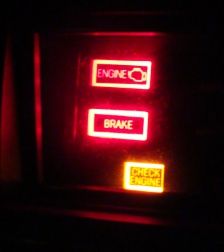well, a MIL lamp does have a 'predictive nature' that can allow a car or truck to remain running fine long enough to take it into service, and if it's a code likely to cause problems (such as a crank sensor, camshaft sensor, or oxygen sensor) a problem WILL likely happen if you drive anyway. but often the light comes on and nothing ever goes wrong. (and many people pull the bulb)
S.M.A.R.T. has a similar predictive nature, and there are tons of false positive reports online, many who's drives should have already crashed and burned years ago which still work just fine. i just would not place that much faith in anything that tries to 'predict the future'
FYI a blown head gasket will not trip a MIL lamp. it can cause the engine to overheat, causing it to run erratic enough to trip it later, but a MIL is only there for fuel/emission control with the car's on-board computer. it has nothing to do with overheating, low oil pressure, or other issues that are now taken over by a gauge, or other idiot light
there was time however where the light or symbol for 'check engine' was a trouble indicator, and in place of a separate light for the oil or battery gauges, or if such gauges did not exist. in that manner, the light was a singular warning for low oil pressure, low voltage, or overheating. those cars or trucks did not have on-board computers. there was a transitional period however and this is seen on the 1980s LTD Crown Victorias, if they had EFI, there were TWO Check Engine lamps on the gauge cluster. one just said 'engine' and was the trouble light, the other said 'Check Engine' and referred to emissions control problems.

